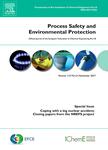版权所有:内蒙古大学图书馆 技术提供:维普资讯• 智图
内蒙古自治区呼和浩特市赛罕区大学西街235号 邮编: 010021

作者机构:Zhejiang Univ State Key Lab Clean Energy Utilizat Hangzhou 310027 Peoples R China Shanghai Chengtou Water Grp Co Ltd Shanghai 201709 Peoples R China
出 版 物:《PROCESS SAFETY AND ENVIRONMENTAL PROTECTION》 (Process Saf. Environ. Prot.)
年 卷 期:2025年第196卷
核心收录:
学科分类:0830[工学-环境科学与工程(可授工学、理学、农学学位)] 0817[工学-化学工程与技术] 08[工学]
基 金:Group Co., Ltd Science and Tech-nology Plan Project of Zhejiang Province [2024C03129, 2025C01158, 2025C01176] Fundamental Research Funds for the Central Universities
主 题:NO x emission concentration prediction Sludge incineration Flame image Extremely randomized trees Optimization algorithm
摘 要:Accurate prediction of NOx emission concentration is crucial for optimizing combustion processes and enhancing flue gas treatment in incineration systems. However, the traditional prediction models that employ data-driven methods face significant challenges due to insufficient input feature information, as well as low computational efficiency and robustness. These limitations hinder the accurate real-time prediction of NOx emission concentration. To address this issue, this paper proposes an advanced hybrid model for predicting NOx emission concentration. Initially, static and dynamic flame features are extracted from flame images and integrated with Distributed Control System (DCS) parameters to serve as the model s input features, while the NOx emission concentration constitutes the model s output feature. Subsequently, the lag time between NOx emissions and the input features is determined using mutual information (MI), followed by data reorganization to develop various predictive models for NOx emission concentration. Finally, the extremely randomized trees (ERT) model, demonstrating superior performance, is further optimized using Bayesian optimization with tree-structured Parzen estimators (BO-TPE). Experimental results indicate that the ERT model optimized with BO-TPE outperforms state-of-the-art models, making it suitable for online optimization of industrial pollutant control and potentially contributing to cleaner production.